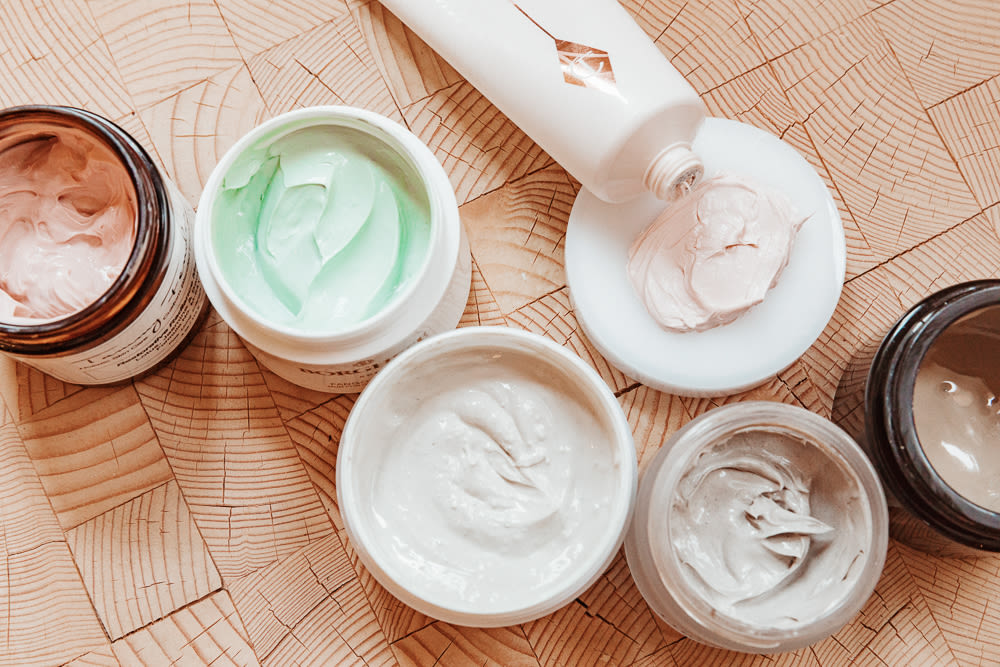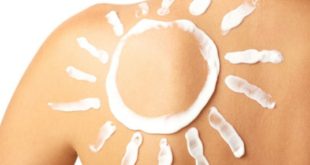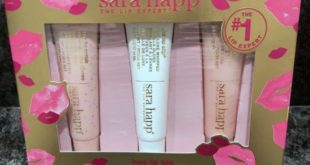
If you’re going to trust anyone, especially with your skin, it should probably be Lesley Thornton. Her product line Klur started as a skincare studio named for the Swedish phrase “klura,” which roughly translates to “figure out.” And as an aesthetician, clients loved the way Thornton always took the time to actually listen to their issues and figure out effective solutions. Essentially, she approaches skincare the way we all wish we did, but don’t always have the time to: with budget, sustainability, and efficacy in mind. She’s even overhauled masking, which you probably haven’t thought about past “slap goop on face, wash goop off.” Even if you think you have it figured out, you’ve never heard tips as clever as Thornton’s, and they’ll completely change your approach to masking. Here’s her best advice:
How you apply an exfoliating mask matters
While you might already know your skin type is mostly dry or mostly oily, pretty much everyone’s skin is a teeny bit of both. The pores on your forehead, nose, and chin tend to be slightly larger, which is why that area (often called the t-zone) is more prone to shine. The outer perimeter of your face might have slightly smaller pores, which means those areas get dry and irritated easily. So while you can use an acid-based mask on your whole face, the t-zone can handle it sitting on the skin for slightly longer. “An exfoliating mask should be applied to the t-zone first and the cheeks last,” says Thornton, who emphasizes that your cheeks tend to be more sensitive than the rest of your face.
Don’t keep a clay mask on too long
How long is too long? Well, Thornton’s rule of thumb is anything past 15 to 20 minutes—at that point, the mask starts to do more harm than good. “If you leave a mask on for over 20 minutes, your skin will start to become dehydrated and transepidermal water loss may set in,” she explains. For clay masks in particular, Thornton recommends rinsing before you think it’s ready. “I never ever recommend clients allow the to dry completely,” she adds about the way most people use clay masks. If you think about it, giving a clay mask time to completely dry out means your skin ends up drying out, too. “If your skin is tight or uncomfortable, the mask has been left on much too long.” You can steam a clay mask (in the shower or with a portable steamer) to prevent it from drying out, but Thornton doesn’t recommend doing that if you have sensitive skin.
Follow up hydrating masks with moisturizer or oil
A soothing hydration mask is great for when you want to add a boost of dewiness to your skin, and since lots of hydration masks are meant for overnight use, you don’t have to worry about leaving it on too long. Whenever you are ready to wash it off, Thornton emphasizes the work doesn’t stop there—to make sure those added benefits don’t evaporate away, quickly seal the moisture with a cream or facial oil right after you wash your face. “The key to gaining the most benefit from a hydrating mask is following up with a proper occlusive,” she explains. An moisture-sealer can also help you get use out of clay masks in winter, when you’re less oily but still looking for a deep clean. Thornton’s been known to put a thin layer of facial oil under a clay mask to bolster the skin’s natural barrier, too. Of course, “You should always follow up afterwards with proper hydration and skin replenishment products,” she adds. Her favorite replenishers include Mara’s Universal Face Oil, Klur’s Symmetry Fluid, and Aura Cacia’s Grapeseed Oil, or Skinceuticals Triple Lipid Restore if you prefer a cream.
Be gentle while you take off a mask
“I’m a huge fan of rinsing with cool water and clean hands,” says Thornton about removing a mask once it’s done processing. Especially with a clay mask, it helps to make small circles across the skin like you would a cleanser to slowly melt it away. After you’ve gotten most of the mask off, Thornton takes a damp, soft cloth to wipe off the rest. If the mask is dark or colored, you can also use a wet paper towel (Viva brand is Thornton’s favorite) to avoid staining. There’s no need to rub, tug, or scrape a mask off—slow and steady wins the race, and will save you a mess in the bathroom.
And remember not to go overboard
Masks can supercharge your routine, but you shouldn’t rely on them—leave the heavy lifting to daily skincare staples like toner, serum, and sunscreen. The more pressure you put on your masking routine to clear a breakout or even out your skin tone, the less likely you are to see the results you want. In fact, Thornton doesn’t recommend masking (with anything!) more than once a week. “Masks can be highly-effective enhancing treatments, but are commonly overused,” she tells me. By keeping your skin healthy and your moisture barrier in-tact, you’ll minimize irritation and imbalance in the long run. And you might find you don’t need to use as many masks in the first place! A woman after my own lazy heart.
—Ali Oshinsky
Looking to try something new? Shop Lesley Thornton’s all-time favorite masks here:
Photo via ITG



